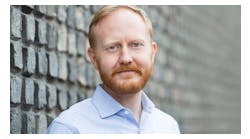iinside on May 8, announced that Sam Kamel has been named president and CEO by the company’s board of directors. Kamel, a current Board of Directors member for iinside, will replace Carlos Hernandez-Artigas, who remains on the board along with him.
“As a board member, Sam has brought a unique blend of inspirational leadership and strategic vision that will translate well to his new role as CEO,” said Houston Staton, chairman of iinside. “It’s an exciting time in the company’s history and Sam is very well-suited to navigate the organization through the rapid growth and expansion that’s coming.”
Staton added, “Our thanks to Carlos for his leadership at iinside. Through his efforts over the past year, we’ve successfully transitioned to newer, hyper-precise LiDAR sensor technology, making iinside the most advanced human flow facilitation solution for airports, large venues and smart cities around the world.”
Kamel has experience as an entrepreneur, Fortune 100 executive, team builder, change agent, innovator, strategist and successful dealmaker. He has been at the center of some of the most disruptive changes in technology at companies such as Netscape, E-LOAN and Microsoft. Over the course of his career, he has raised more than $75 million in funding, overseen multiple acquisitions, and played a pivotal role in two IPO events. He has also served as a decorated officer in the U.S. Navy. Sam studied electrical engineering at Cornell, earned his MBA from Harvard and started his professional career at McKinsey & Company.
“With airlines carrying a record 4.1 billion passengers last year alone, airports are more crowded than ever and time-to-gate information has become extremely valuable to travelers,” Kamel said. “iinside is not only helping airports better understand how people move throughout their concourses, but we’re also innovating in new ways, partnering with leading companies across the travel ecosystem, to improve the overall passenger journey and help airports create new revenue models. We’re now able to see data that has been very difficult to accurately and efficiently capture at scale and share it with multiple partners and travelers in real time.”

